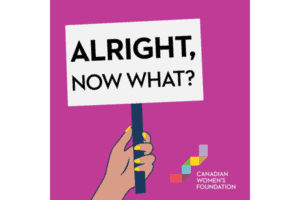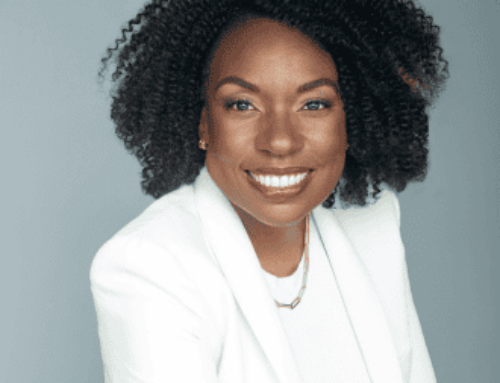 It’s 2022 and the gender pay gap still hurts us. What does the data say? And what are some real life stories behind the numbers?
It’s 2022 and the gender pay gap still hurts us. What does the data say? And what are some real life stories behind the numbers?
The gender pay gap refers to the difference in average earnings of people based on gender. It’s a widely recognized indicator of gender inequities, and it exists across industries and professional levels. There are different ways to measure the gap, but no matter how you cut it, the gap still exists. And it’s not just about gender. Gender pay gaps are worse for those who face multiple barriers, including racialized women, Indigenous women, and women with disabilities. Though it differs by age group, the gap starts from young and carries into the senior years.
Ahead of Equal Pay Day on April 12, Suzanne Duncan, Vice-President of the Canadian Women’s Foundation, and Paulette Senior, President and CEO of the Canadian Women’s Foundation, tell us stories of where they’ve heard about the gap or experienced it in their own lives.
Transcript
00:00:00 Andrea
It’s 2022 and the gender pay gap still hurts us. What does the data say and what are some real-life stories behind the numbers?
Welcome to Alright, Now What?, a podcast of the Canadian Women’s Foundation. We put an intersectional feminist lens on stories that make you wonder “Why is this still happening?” We explore systemic roots and strategies for change that will move us closer to the goal of gender justice.
The work of the Canadian Women’s Foundation and our partners takes place on traditional First Nations, Métis, and Inuit territories. We are grateful for the opportunity to meet and work on this land. However, we recognize that land acknowledgements are not enough. We need to pursue truth, reconciliation, decolonization, and allyship in an ongoing effort to make right with all our relations.
00:00:50 Andrea
The gender pay gap refers to the difference in average earnings of people based on gender. It’s a widely recognized indicator of gender inequities, and it exists across industries and professional levels. There are lots of ways to measure the gap, but no matter how you cut it, the gap still exists and it’s not just about gender. Gender pay gaps are worse for those who face multiple barriers, including racialized women, indigenous women and women with disabilities. Though it differs by age group, the gap starts from young and carries into the senior years.
Here are some hot numbers for you. Women working full time and part time make $0.89 for every dollar men make. Racialized women make, on average, 59% of white men earnings. Those who identify as LGBTQS+ also experience significant pay gaps in Canada. Only 16% of women and gender diverse people with a physical disability report being fairly paid compared to their peers.
And let’s think globally because Canada is in no bubble unto itself- it’ll take about 268 years to close the economic gender gap worldwide if present trends continue.
Numbers can make us forget about the human toll all this takes.
Here’s my colleague Suzanne Duncan, VP of Philanthropy at the Canadian Women’s Foundation, addressing what she’s been told about the gap.
00:02:12 Suzanne
It’s really more around the stories that folks have told me, particularly as I’ve been working in the gender space and having the opportunity to talk with lots of folks, with women, with gender nonconforming folks, with lots of different people who are, you know, really experiencing this kind of thing firsthand.
And one thing that we hear a lot, or that I’ve heard a lot, is women who are telling me that when they are being hired, they’re being seen as a risk and that often when their colleagues or male colleagues are being hired, they’re being seen for their potential. And so those things kind of show up in different ways.
You know, a couple weeks ago I was talking with a Black woman who had been hired into a great firm. She was really, really excited, but she knew from the very beginning that she was going to be underpaid. They were actually like we’re taking a risk on you. We haven’t had anyone like you here before, and they’ll tell you they weren’t talking about her degrees or her experience. They were just referring to the fact that she was a Black woman and that that was going to be something different for this organization and that they were going to really manage that risk. And you know, if you could see me, you’d see all the air quotes I’m putting around things. But they were going to manage that risk by not paying her as much as other folks so that they would be able to save some money in case it didn’t go well. And that kind of risk language I’ve seen show up a couple of times.
We know some of the gender pay gap stuff is really around taking leave, taking time to have kids, leave for parenting, and so I recently was talking with a woman who had just left her job. She’s been there for a number of years and as she was leaving she learned some things, ’cause it’s sometimes only after that you learn these things.
She was the only woman on her team and she had had a couple of kids during that time, but she actually had a partner who worked from home, so her partner was the one who took the majority of the time raising the kids, the majority of the leaves. And during that time a lot of the men that she worked with had taken leaves to look after their kids, paternity leaves.
And so, as she was leaving, she found out that there had been a very significant pay gap between her and her male colleagues, like 20-25% significant, and she found out that the company had actually made it a practice to pay women less because the company felt that they were going to need to save that money to be able to cover them when they went on maternity leave. And she thought it was so telling that that was still what they were thinking, even though she hadn’t really taken very many leaves and her colleagues had. But that kind of thinking was still so embedded in that.
And it’s showing up in a lot of ways is that we’ve seen during the pandemic where women have been like, well, I’m going to be at home anyway, I’m not going to take a leave at all, because if I take a leave if I’m in a client serving kind of job, like I’m in law or I’m in consulting or I’m in sales, I know I’m going to lose all of my clients while I’m off on my leave, which means I’m going to come back to an incredibly different job. It means I’m going to come back to not having the same commissions, not having the same kind of relationships, not having any of those, and so we’re, you know, we’ve actually been hearing folks decide not to go on leave so that they don’t end up in that pay gap, which is a really, really difficult and complicated way to address the gaps that we’re seeing.
00:05:28 Andrea
And that issue of leave is huge.
It’s more likely for women to have interruptions or absences from work, often due to unpaid caregiving needs, which are linked to fewer opportunities for promotions and salary increases.
Another reason for the gender pay gap, traditional women’s work tends to be paid less than traditional men’s work. Jobs seen as women’s work are often undervalued. And more women than men work part time for lots of reasons, including lack of affordable childcare, lack of family leave policies, and social pressure to carry the bulk of domestic responsibilities.
And of course, the gender pay gap in all its intersectional nuance, is also due to direct discrimination.
In the end, it’s all structural. We set up working conditions this way and we need to change it.
Why is ending the gender pay gap so urgent?
It’s one of the root causes of gendered poverty. Women are more vulnerable to low income than men in Canada, partially due to the pay gap.
As I mentioned, it impacts all life stages. Girls 12 to 18 experience a summer job pay gap. Women post- secondary students leave school with student loans to pay and lesser means to do it. And it contributes to a gendered pension gap of 22% where women retire with only about 80% of the pension men retire with.
I asked Paulette Senior, President and CEO of the Canadian Women’s Foundation, to share her experience with the gender pay gap as a leader in the nonprofit sector.
00:06:57 Paulette
We’re in a sector that’s already under-resourced, the gender equality sector, where we’ve had to fight for every grant or funding or agreement or donation. So we’re already under-resourced from a woman leader in the sector, and then I’m also a Black woman so it’s a triple bind, if you will, and identity that I walk with in this sector.
And being a Black woman leader in this space and being aware of and then addressing the gender gap, is something that I’ve certainly had to navigate and maneuver around, while at the same time advocating to bring an end to this gap. It’s an interesting walk if you will. It is structural and it’s got personal implications, and so having to walk that for many decades doing this work has had me kind of reflect on it, especially with my leadership at the Canadian Women’s Foundation and part of that in other organisations I’ve been, but most pressing now working to bring an end to this discrimination based on gender is even more paramount today, you know.
I’ve had to really think through myself about when discussions arise about whether it’s going into a new job, or, you know, having a compensation review personally. For me, what has been predominant in my mind is the fact that I work in a sector that’s under-resourced and it’s the charitable sector and we depend on the goodwill of many different kinds of people to support our work. Yet, I still need to be paid and to be recognized in terms of the role I hold and the work that I do and trying to balance all of that. And also knowing that my male counterparts in their organisations probably don’t walk the same kind of path that I do when it comes to negotiating for compensation. I had to learn how to stand up for myself and maybe I’ve become more adept at it as I’ve gotten older.
It is really about myself being aware of what compareable organisations are paying their leaders and realizing that and being on top of that. You know over the years I have said no to increases. I’ve had that experience and I felt quite justified in saying no because what I put first was the health and well-being and financial stability of the organization. And also being concerned about what my colleagues and the people who work in my organization would also being compensated and not wanting to set the wrong example about that. So those are all the sort of background conversations that I have with myself. It’s not easy because I’m trying to balance all of that while knowing that systemically there is a problem.
00:10:13 Andrea
Alright, now what?
Read the facts about the gender pay gap by visiting our website at canadianwomen.org. It has some very useful and up-to-date data and links.
And check out what’s happening on Equal Pay Day on April 12. For example, the Ontario Equal Pay Coalition is doing an all-party leaders debate on women’s economic equality. It’s a free, accessible live stream that you can participate in. Questions will be put to party leaders by women experiencing the impact of the pandemic and inequality firsthand. Go to equalpaycoalition.org to RSVP today.
Please listen, subscribe, rate and review this podcast and share it with others. If you appreciate this content, if you want to get in on the efforts to build a gender equal Canada, please donate today and consider becoming a monthly donor. And thank you for being tireless in your support for gender justice.






